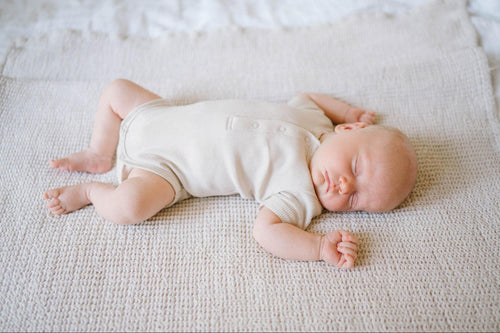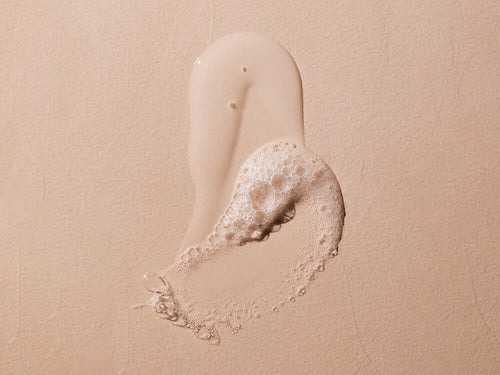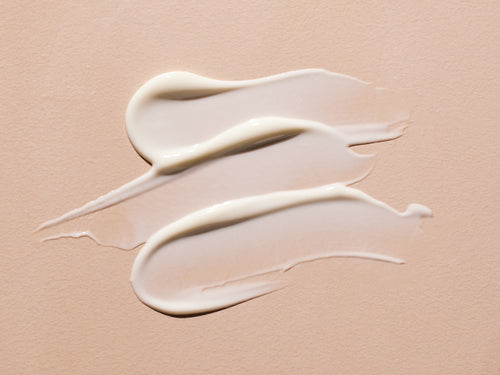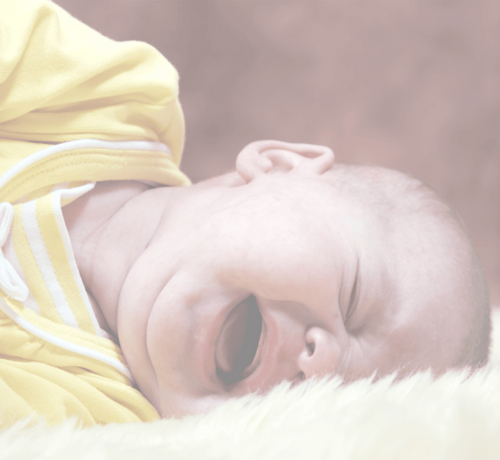When do babies drop to one nap? Though there’s a general age range when babies start to stay awake longer, there are a lot of other factors that can influence how and when your baby sleeps throughout the day.
In this article, we discuss what you need to know about the question, “When do babies drop to one nap?” and give you signs to look for and tips to make the transition easier for everyone involved.
When Do Babies Drop To One Nap?

As a general rule, most babies are ready to drop to one nap sometime between 12 and 18 months old.
Yes, that’s a pretty wide age range, so it’s important to keep in mind that your little one may be ready early (at 10 or 11 months) OR they may wait longer to make the transition (at 19 or 20 months).
Neither is a sign of rapid or slow development, so there’s no reason to consult with a doctor if your child stops napping at 9 months or waits until they’re almost three to drop to one nap.
As we mentioned at the beginning of this article, there are a lot of factors that can affect your little one’s nap schedule. Some are within your control. Some are outside of your control.
The bottom line is, don’t sweat the small stuff. Watch for the signs that they’re ready to sleep less at whatever age it may happen and make the transition as easy as possible.
How To Tell When Your Baby Is Ready To Drop To One Nap

They Consistently Resist Any Nap Time
If your little one consistently resists their nap in the morning or their nap in the afternoon, it could be a sign that they’re ready to drop to one nap.
As we’ll discuss in more detail in the Tips To Make The Transition Easier section, most babies will start to resist their morning nap and maintain their afternoon nap. Having said that, your baby may do just the opposite.
Watch for the other signs in this section and, if you see them resisting more and more often over the course of a week or two, consider starting to transition away from two naps per day.
They Take Shorter And Shorter Naps
You may also notice that your baby is taking shorter and shorter naps. This can be a sign that it’s time to start considering the question, “When do babies drop to one nap?” Why? Because they may be there now.
For example, if your little one’s nap goes from two hours to one hour to less than an hour — even when they seem tired — it can indicate that they’re ready to do away with the morning nap completely and take a single long afternoon nap instead.
Of course, your child may decide to do things slightly differently and will sleep less in the afternoon in order to consolidate their nap time into a single morning nap. Both methods for dropping to one nap are just fine.
They Stay Awake Longer Between Naps
Another way to tell if your baby is ready to drop to one nap is if they want to stay awake longer between nap times.
What does this look like in conjunction with the other signs on this list? They may resist going down for their morning nap and only sleep for 45 minutes. Then, in the afternoon, they may resist going to sleep for longer and longer before they finally drift off.
In that way, they are doing their best to stay awake longer between their two sleep times.
As we mentioned earlier in this article, that can be a signal that they’re ready to eliminate either the morning or afternoon nap and only rest once during the day before their regular night hours.
They Have Difficulty Falling Asleep For Naps
You might think that resisting the morning nap would make them go down easier for the afternoon nap. Often, that’s not the case.
Instead, your child may start to have difficulty falling asleep for any nap. This is often an indication that they are in transition and trying to find which nap time works best for them.
With help from you — and lots of patience on your part — they’ll eventually settle down into one nap per day (until they’re old enough to skip the nap altogether).
Their Nighttime Sleep Habits Change
In some cases, your little one’s nighttime sleep habits may change when they’re ready to drop to one nap. Your baby may start to wake up more frequently during the night or wake up earlier in the morning.
Such changes can indicate that there’s an imbalance in their overall sleep schedule caused by too many naps (or attempted naps).
If you notice your baby waking up more frequently at night or waking up earlier in the morning in combination with other signs on this list, it may be time to switch to one nap per day.
Their Mood Or Behavior Changes
If your baby’s mood or behavior changes so that they’re generally less tired throughout the day — even with shorter naps — it could be a sign that they’re ready for a change in their sleep schedule.
Consider transitioning to one nap in the morning or one nap in the afternoon to smooth things out.
Take your cues from your little one, but keep in mind that most babies will want to skip the morning nap after a good night’s sleep and will be more inclined to nap in the afternoon after a busy morning of play and a good lunch.
And, remember, if they want to nap in the morning and skip the afternoon sleep time, that’s OK too.
Tips To Make The Transition Easier

Gradually Shorten The Morning Nap
If you think your baby is showing signs that they’re ready to drop to one nap, avoid making the switch all at once.
Instead, try gradually shortening the morning nap by 15 to 30 minutes over the course of several days or weeks. This will help prepare your baby to be ready when the afternoon nap arrives.
Combine The Morning And Afternoon Naps
Your ultimate goal of shortening the morning nap is to combine the two naps into a single nap. You may have to move the afternoon nap up a bit in your schedule in order to accommodate the new wake window, but that’s OK. Whatever works for you and your little one!
Here’s a sample schedule to give you an idea of what you’re aiming for:
Wake up: 7 a.m.
Lunch: 11 a.m. or 12 p.m.
Nap: 1 p.m. to 3 p.m.
Bedtime: 7 p.m. or 8 p.m.
Adjust Bedtime
When your baby drops to one nap per day, you may have to adjust their bedtime a bit later to compensate for what may be a longer nap in the afternoon.
With two shorter naps per day, your baby may have been ready for bed at 6 p.m. or 7 p.m. But with one nap per day, your baby may need to sleep a bit longer in the afternoon so they won’t be ready to start their nighttime routine until later into the evening hours.
Watch your baby for cues and adjust the time accordingly.
Be Consistent And Patient
When your baby is ready to drop to one nap, the best thing you can do for them (and for you) is be consistent and patient.
Try to accommodate your baby’s needs as they make this big transition, but try to get into a consistent routine as soon as possible.
And, above all, be patient with your little one if they’re extra fussy. Give them lots of love and attention to help them navigate this major milestone.
Help Your Baby Adjust To Their New Nap Schedule With Mustela

To help your baby adjust to their new nap schedule, make sure their environment is as comfortable as possible.
This includes things such as:
- Providing a firm mattress
- Keeping their sleep space free from blankets and other items (until they’re old enough)
- Maintaining a cool temperature in the room
- Running a white noise machine to block out ambient noises
Helping your baby get the most out of their new nap schedule also includes keeping them as comfortable as possible while they sleep.
For your little one, that will most likely include soft, comfy jammies and a hydrating body lotion or moisturizing face cream like Mustela’s Hydra Bebe Body Lotion or Hydra Bebe Face Cream.
These moisturizing skin care products help to protect and hydrate so that your baby doesn’t wake up prematurely because of tight, itchy skin.
For more ways to keep your baby comfortable in their own skin — whether they’re napping or not — visit MustelaUSA.com.
















